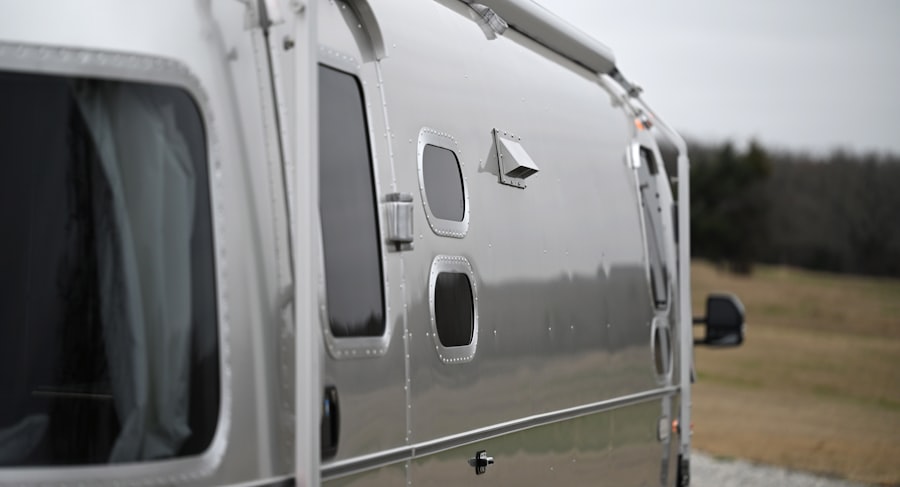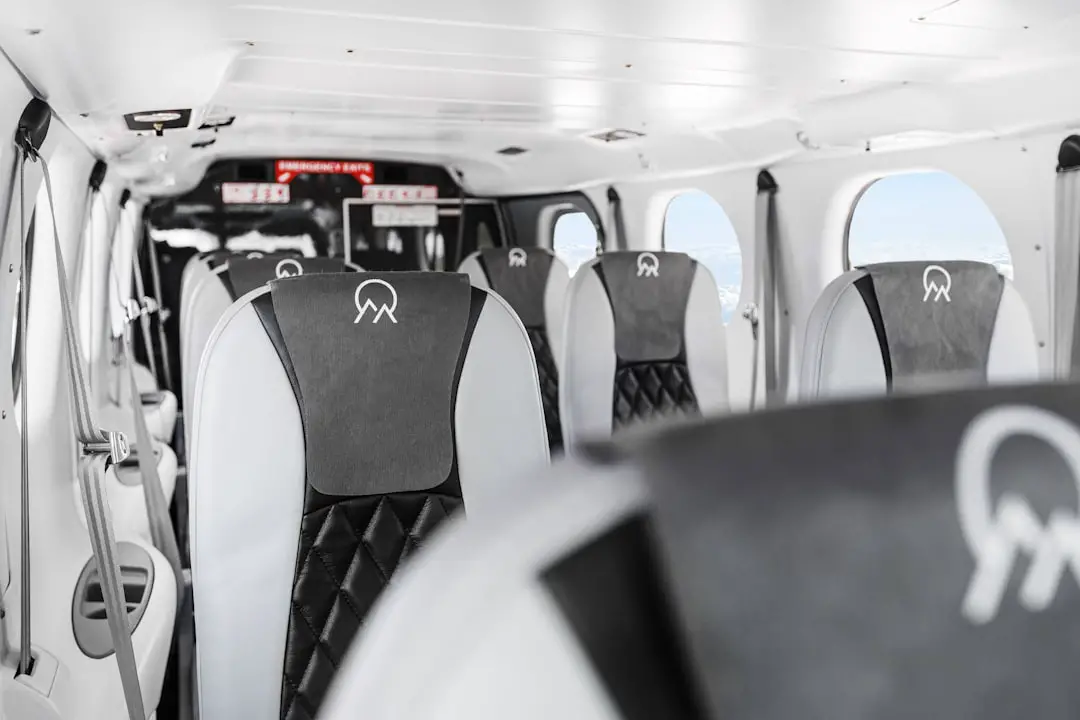The aviation industry is a complex and multifaceted arena, dominated by a few key players that shape the landscape of commercial air travel. While Boeing has long been recognized as a titan in the field, a variety of other manufacturers have emerged as significant competitors, each contributing unique offerings to the market.
These companies not only provide alternatives to Boeing’s extensive lineup but also drive innovation and competition within the industry. The presence of non-Boeing airlines is crucial for fostering a competitive environment that benefits airlines and passengers alike. By offering different aircraft designs, technologies, and price points, these manufacturers cater to a wide array of operational needs and preferences.
This article delves into several prominent non-Boeing airlines, exploring their contributions to the aviation sector and how they challenge Boeing’s dominance.
Key Takeaways
- Non-Boeing airlines offer a diverse range of options for aircraft, providing alternatives to Boeing for airlines around the world.
- Airbus is a major competitor to Boeing, offering a wide range of commercial aircraft and challenging Boeing’s dominance in the market.
- Embraer is a popular choice for regional airlines, known for its regional jets and turboprop aircraft that cater to shorter routes.
- Bombardier, a Canadian alternative to Boeing, offers a range of commercial and business aircraft, providing options for various airline needs.
- McDonnell Douglas, although no longer in operation, was a historical player in the aircraft industry, known for its popular DC-10 and MD-11 aircraft.
Airbus: A major competitor to Boeing
Airbus, founded in 1970, has established itself as one of the most formidable competitors to Boeing in the commercial aircraft market. The European aerospace giant has consistently pushed the boundaries of innovation, introducing advanced technologies that enhance fuel efficiency, passenger comfort, and operational performance. The A320 family, for instance, has become a staple for low-cost carriers and full-service airlines alike, thanks to its versatility and efficiency.
With over 10,000 units delivered, the A320 has revolutionized short- to medium-haul travel. Airbus’s commitment to sustainability is evident in its development of the A350 XWB, which features advanced composite materials and aerodynamics that significantly reduce fuel consumption and emissions. This aircraft is designed for long-haul routes and has garnered praise for its spacious cabin and quiet operation.
As airlines increasingly prioritize environmental responsibility, Airbus’s focus on sustainable aviation solutions positions it as a leader in the industry. The competition between Airbus and Boeing has spurred both companies to innovate continuously, resulting in better aircraft for airlines and passengers.
Embraer: A popular choice for regional airlines

Embraer, a Brazilian aerospace manufacturer founded in 1969, specializes in producing regional jets that cater to airlines operating shorter routes. The E-Jet family, which includes the E170, E175, E190, and E195 models, has gained widespread acceptance among regional carriers due to its efficiency and passenger-friendly design. These aircraft are particularly well-suited for markets where demand does not justify larger jets, allowing airlines to connect smaller cities with major hubs effectively.
The E-Jets have been instrumental in expanding air travel accessibility, enabling airlines to serve routes that might otherwise be unprofitable with larger aircraft. With a capacity ranging from 70 to 130 passengers, these jets strike an ideal balance between operational efficiency and passenger comfort. Embraer’s focus on regional aviation has allowed it to carve out a niche in the market, providing airlines with tailored solutions that meet their specific needs while competing effectively against larger manufacturers like Boeing and Airbus.
Bombardier: A Canadian alternative to Boeing
| Metrics | Data |
|---|---|
| Company Name | Bombardier |
| Country of Origin | Canada |
| Industry | Aerospace |
| Product | Aircraft |
| Market Position | Alternative to Boeing |
Bombardier Aerospace, based in Canada, has made significant contributions to the aviation industry with its line of regional jets and business aircraft. The CRJ series, which includes the CRJ700, CRJ900, and CRJ1000 models, has been a popular choice for regional airlines since its introduction in the 1990s. These aircraft are known for their fuel efficiency and ability to operate in various airport environments, making them ideal for regional operations.
In addition to the CRJ series, Bombardier’s CSeries (now known as the Airbus A220 after being acquired by Airbus) was designed to compete directly with Boeing’s 737 MAX and Airbus’s A320neo families. The CSeries features advanced aerodynamics and materials that contribute to lower operating costs and reduced environmental impact. Although Bombardier faced challenges during the CSeries program’s development, its eventual success demonstrated the potential for innovation outside of the traditional Boeing-Airbus duopoly.
McDonnell Douglas: A historical player in the aircraft industry
McDonnell Douglas was a significant player in the aviation industry before its merger with Boeing in 1997. Founded in 1967 through the merger of McDonnell Aircraft Corporation and Douglas Aircraft Company, McDonnell Douglas produced several iconic aircraft that shaped commercial aviation. The DC-9 and MD-80 families were particularly influential during the late 20th century, providing airlines with reliable options for short- to medium-haul routes.
The MD-11, introduced in the early 1990s as a wide-body aircraft, was another notable contribution from McDonnell Douglas. Although it faced stiff competition from Boeing’s 767 and Airbus’s A330, the MD-11 found a niche among cargo operators due to its large cargo capacity and range. The legacy of McDonnell Douglas continues to influence modern aircraft design and engineering practices within Boeing and beyond.
Comac: China’s entry into the aircraft market

The Commercial Aircraft Corporation of China (Comac) represents China’s ambitious entry into the global aviation market. Established in 2008, Comac aims to reduce China’s reliance on foreign aircraft manufacturers by developing domestically produced commercial jets. The C919 is Comac’s flagship project, designed to compete with the Boeing 737 MAX and Airbus A320 families.
With a seating capacity of up to 190 passengers, the C919 incorporates advanced technologies aimed at improving fuel efficiency and passenger comfort. Comac’s efforts are not limited to large commercial jets; it is also developing the ARJ21 regional jet to serve domestic routes within China. The ARJ21 is designed to operate in challenging environments often found in rural areas of China, where smaller aircraft are essential for connecting remote communities with major cities.
As Comac continues to develop its product line and gain regulatory approvals from international aviation authorities, it seeks to establish itself as a credible competitor on the global stage.
Sukhoi: Russia’s contribution to non-Boeing airlines
Sukhoi Civil Aircraft Company (SCAC), a subsidiary of the Russian aerospace conglomerate Sukhoi, has made strides in the regional jet market with its Superjet 100 (SSJ100). Launched in 2008, the SSJ100 was designed to compete with Embraer’s E-Jets and Bombardier’s CRJ series by offering modern features and improved performance characteristics. With a capacity of up to 108 passengers, the SSJ100 is well-suited for regional operations.
The Superjet 100 incorporates advanced avionics and materials that enhance its operational efficiency while providing passengers with a comfortable flying experience. Despite facing challenges related to international sanctions and market acceptance outside Russia, Sukhoi has focused on expanding its customer base by targeting emerging markets in Asia and Latin America. The SSJ100 represents Russia’s commitment to developing its aviation industry and reducing dependence on Western manufacturers.
ATR: A leading manufacturer of regional turboprop aircraft
ATR (Aerei da Trasporto Regionale) is a joint partnership between Airbus and Leonardo S.p.A., specializing in turboprop aircraft designed for regional air travel. Founded in 1981, ATR has become synonymous with efficient short-haul operations through its popular ATR 42 and ATR 72 models. These aircraft are particularly well-suited for regional airlines operating in areas with shorter runways or less dense traffic.
The ATR turboprops are known for their low operating costs and fuel efficiency compared to regional jets, making them an attractive option for airlines looking to optimize their route networks. With seating capacities ranging from approximately 40 to 78 passengers, ATR aircraft can serve various markets effectively while maintaining high levels of reliability. As regional air travel continues to grow globally, ATR remains a key player in providing solutions tailored to this segment of the aviation industry.
Mitsubishi: Japan’s foray into non-Boeing aircraft
Mitsubishi Aircraft Corporation has made significant strides in entering the commercial aviation market with its SpaceJet program (formerly known as Mitsubishi Regional Jet or MRJ). Launched in 2008, the SpaceJet aims to compete with Embraer’s E-Jets and Bombardier’s CRJ series by offering advanced technology and improved fuel efficiency for regional operations. With a seating capacity of up to 92 passengers, the SpaceJet is designed for short- to medium-haul routes.
Despite facing delays during its development phase due to technical challenges and certification processes, Mitsubishi remains committed to bringing the SpaceJet to market. The aircraft features state-of-the-art avionics systems and aerodynamic designs that enhance performance while reducing environmental impact. As Japan seeks to strengthen its presence in global aviation manufacturing, Mitsubishi’s efforts reflect a broader trend of diversification within the industry beyond traditional players like Boeing and Airbus.
Antonov: Ukraine’s aircraft manufacturing company
Antonov State Enterprise is Ukraine’s leading aerospace manufacturer with a rich history dating back to 1946. Renowned for producing large transport aircraft such as the An-124 Ruslan and An-225 Mriya, Antonov has carved out a niche in heavy cargo transport within the global aviation market. The An-124 remains one of the largest cargo planes ever built and is widely used for transporting oversized cargo across continents.
In addition to cargo aircraft, Antonov has developed passenger versions of some of its models, such as the An-148 regional jet. This aircraft was designed for short-haul routes while offering modern amenities for passengers. Antonov’s commitment to innovation is evident in its ongoing projects aimed at developing new aircraft designs that meet contemporary aviation demands while leveraging its expertise in large-scale manufacturing.
The future of non-Boeing airlines
The future of non-Boeing airlines appears promising as these manufacturers continue to innovate and adapt to changing market dynamics.
As they develop new technologies that address environmental concerns while enhancing passenger experiences, these manufacturers will contribute significantly to diversifying options available for airlines worldwide.
Moreover, geopolitical factors may influence market dynamics as countries seek self-sufficiency in aerospace manufacturing capabilities. Emerging players like Comac from China and Sukhoi from Russia are indicative of this trend as they strive to establish themselves as credible alternatives on the global stage. As competition intensifies among non-Boeing manufacturers, airlines will benefit from an expanded array of choices tailored specifically to their operational needs—ultimately leading toward a more resilient aviation ecosystem that fosters innovation across all sectors of air travel.
If you’re interested in sustainable travel options, you may also want to check out this article on the best solar charger for backpacking here. It’s important to consider eco-friendly alternatives in all aspects of travel, including the equipment we use.
FAQs
What airlines do not use Boeing aircraft?
Some airlines that do not use Boeing aircraft in their fleet include Airbus, Embraer, Bombardier, and other manufacturers.
Why do some airlines choose not to use Boeing aircraft?
Airlines may choose not to use Boeing aircraft for a variety of reasons, including preference for other manufacturers’ aircraft, specific operational requirements, or business agreements with other aircraft manufacturers.
What are some examples of airlines that exclusively use non-Boeing aircraft?
Some examples of airlines that exclusively use non-Boeing aircraft in their fleet include AirAsia (Airbus), JetBlue (Airbus and Embraer), and Delta Air Lines (Airbus and Bombardier).
Are there any safety concerns associated with Boeing aircraft?
Boeing aircraft have been involved in some high-profile safety incidents in recent years, including the grounding of the 737 MAX series. However, Boeing aircraft are certified by aviation authorities and undergo rigorous safety testing and maintenance procedures.
What are some popular non-Boeing aircraft models used by airlines?
Some popular non-Boeing aircraft models used by airlines include the Airbus A320 family, A330, and A350, as well as the Embraer E-Jet series and Bombardier CRJ series.
